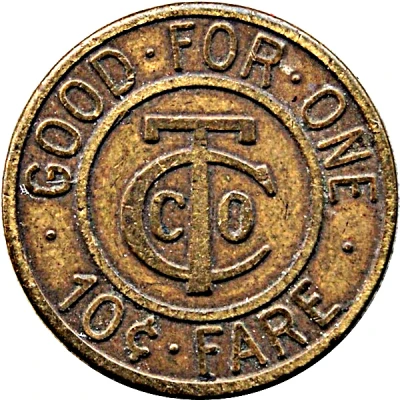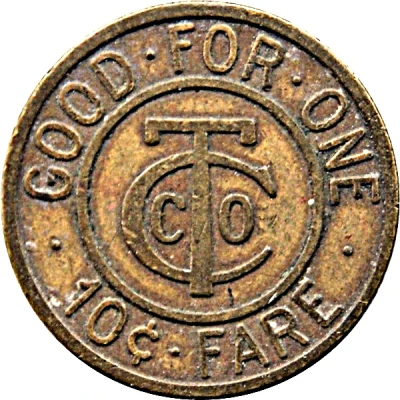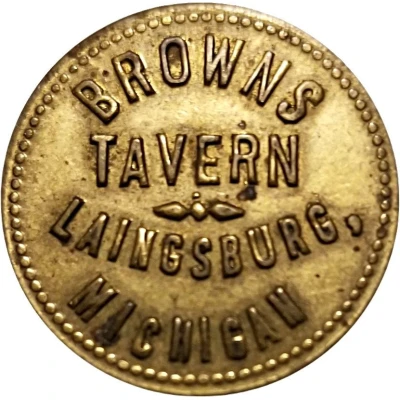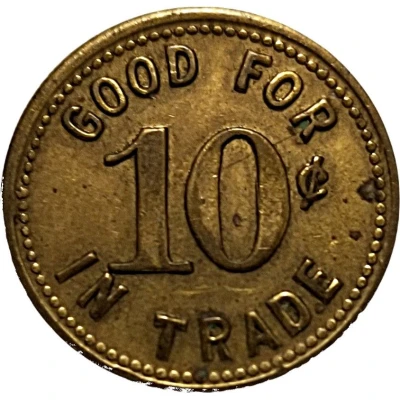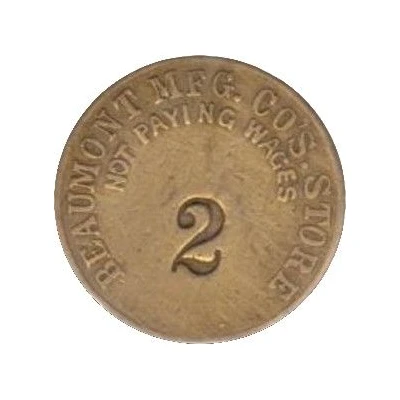
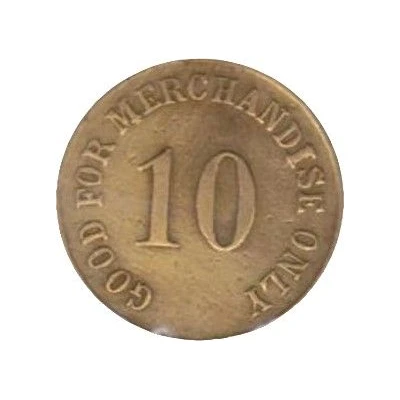

10 Cents - Beaumont Mfg. Co's Store (Spartanburg, South Carolina) ND
| Brass | - | 18 mm |
| Location | United States |
|---|---|
| Period | Federal republic (1776-date) |
| Type | Trade tokens › Business tokens |
| Value | 10 Cents 0.10 USD = EUR 0.09 |
| Currency | Dollar (1785-date) |
| Composition | Brass |
| Diameter | 18 mm |
| Shape | Round |
| Orientation | Coin alignment ↑↓ |
| Updated | 2024-11-14 |
| Numista | N#196396 |
|---|---|
| Rarity index | 97% |
Reverse
Script: Latin
Lettering:
GOOD FOR MERCHANDISE ONLY
10
Comment
Spartanburg, South Carolina (Spartanburg County), U.S.A.
Beaumont Manufacturing Company was incorporated in June 1890 by a group of local businessmen. J. Haddon Sloan (1855-1906), a local cotton merchant and banker, served as company president while other investors included John B. Cleveland, H.A. Ligon, Joseph Walker, C.E. Fleming, and Vardry McBee. Textile Town, a Spartanburg-area cotton mill retrospective by the Hub City Writers Project, had this to say about the mill:
Located on Chinquapin Creek inside the corporate limits of Spartanburg, Beaumont Manufacturing Company was built in 1890 and equipped with 3,072 spindles, 640 twisters, and 40 bag looms. The original building was one-story high and located adjacent to the Richmond & Danville Railroad (later Southern Railroad). A mill village of 15 homes along North Liberty Street was constructed with the mill. The main products in 1900 were carpet warps, seamless bags (for corn and grain), and wrapping twines for the domestic market. These products were made using cotton waste from nearby mills. In 1907, the mill operated 12,360 spindles and 252 automatic looms and, by 1920, there were 142 homes in the mill village. Dudley L. Jennings served as president after the death of J.H. Sloan but Walter S. Montgomery, Sr. acquired the mill in 1941 and the plant was subsequently modernized for the production of heavy cotton-duck fabric needed by the armed services for the impending war. Beaumont Manufacturing Company was the first textile plant in the nation to dedicate its entire production to the war effort and the plant’s employees won five coveted Army-Navy “E” awards during World War II.
The company eventually merged with nearby Spartan Mills (see page ???) and employed more than 1,200 people. The mill was closed in 1999 and was partially dismantled in 2002.
The company store was located on North Liberty Street across from the mill and was run by a succession of managers over the years. Thomas R. Brannon was in charge in 1910, J.F. Laughridge in 1913, B.C. Paul in 1916, and B.G. Peterson in 1926.
https://tokencatalog.com/token_record_forms.php?action=DisplayTokenRecord&td_id=53343&inventory_id=29566&attribution_id=53717
